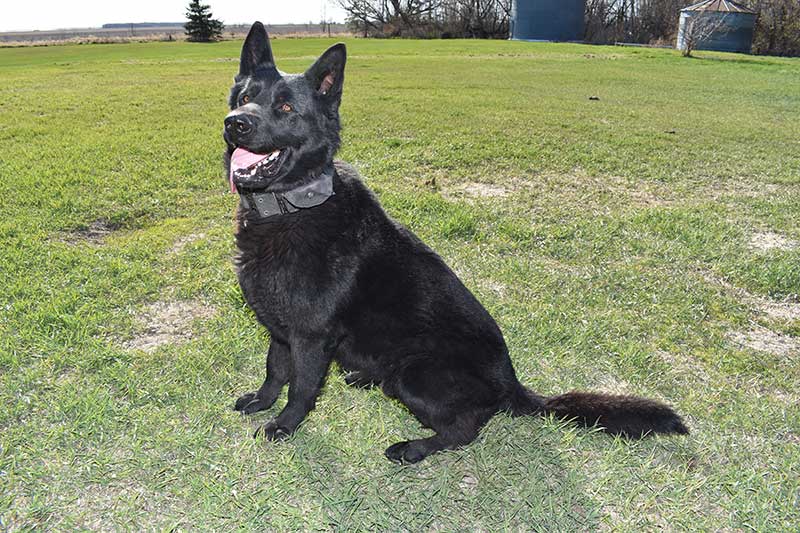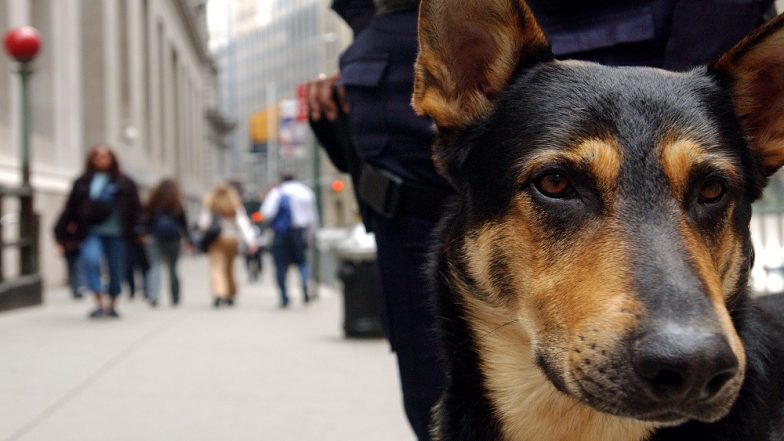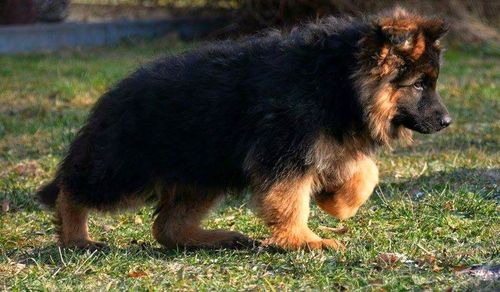Visit our sable german shepherd puppies for sale page to learn more about german shepherd colors and to reserve your sable puppy! We help you to find better deals from all over land for sale used cars sri lanka used phones sri lanka used phones for sale and cars for sale. Embark has been at the forefront, influencing policy in relation to animals and playing a vital role in making a significant change in the lives of animals and people alike.
We help you to find better deals from all over land for sale, used cars sri lanka, used phones sri lanka, used phones for sale and cars for sale. Check out our big and beautiful caucasian mountain dog puppies for sale, from the finest, european breeders, and you can't help but be amazed by these huge, handsome dogs. Akc registered german shepherd puppies, currently vaccinated with veterinarian examination, health certificate & shipping. If you are unable to find your german shepherd dog puppy in our puppy for sale or dog for sale sections, please consider looking thru thousands of german shepherd dog dogs for adoption. Get even more great ideas about droll teacup pomeranian puppies for sale in sri lanka by visiting our recommendation website with link.
Get the best deals on german shepherd price ads in sri lanka. We have 32 dogs for sale in sri lanka with price ads under animals & pets category. Get the best deals on dogs for sale in sri lanka with price ads in sri lanka.
We have 27 german shepherd price ads under animals & pets category. Most of the rescues and treating of the injured are focused in the western province of sri lanka, but we do try our best to reach as many as we can in other areas. Good quality german shepherd puppies for sale if anyone interested plz call me. Achilles kennel was initiated in the year 1991 and ever since then our sole purpose has been to improve the standards of dog breeds residing in sri lanka.
It destroys grape, coffee, maize, sugarcane, and eats watermelons, muskmelons, and nuts. In Greece, golden jackals are not as damaging to livestock as wolves and red foxes but they can become a serious nuisance to small stock when in great numbers. In southern Bulgaria, over 1,000 attacks on sheep and lambs were recorded between 1982 and 1987, along with some damage to newborn deer in game farms.
The damage by jackals in Bulgaria was minimal when compared to the livestock losses due to wolves. Approximately 1.5–1.9% of calves born in the Golan Heights die due to predation, mainly by jackals. This page is updated on a weekly basis to showcase new puppies available for sale or upcoming litters that will be ready to take home soon.
Find anatolian shepherd dog puppies and breeders in your area and helpful anatolian shepherd dog information. Advertise your great dane dog breeder website and great dane puppies in sri lanka free. Because there will be many articles related to droll teacup pomeranian puppies for sale in sri lanka update every day. The german shepherd was developed in germany in the 1880's as a herder. More dominant than gsds of other colors because sable will show even if there is only one sable allele. Dog pups show unrestrained fighting with their siblings from 2 weeks of age, with injury avoided only due to their undeveloped jaw muscles.
This fighting gives way to play-chasing with the development of running skills at 4–5 weeks. Wolf pups possess more-developed jaw muscles from 2 weeks of age, when they first show signs of play-fighting with their siblings; serious fighting occurs during 4–6 weeks of age. Compared to wolf and dog pups, golden jackal pups develop aggression at the age of 4–6 weeks, when play-fighting frequently escalates into uninhibited biting intended to harm. This aggression ceases by 10–12 weeks when a hierarchy has formed. Once the lactation period concludes, the female drives off the pups. Pups born late remain with their mother until early autumn, at which time they leave either singly or in groups of two to four individuals.
Females reach sexual maturity after 10–11 months and males at 21–22 months. Genetic analysis reveals that mating sometimes occurs between female jackals and gray wolves, producing jackal-wolf hybrids that experts cannot visually distinguish from wolves. Hybridization also occurs between female golden jackals and male dogs, which produces fertile offspring, a jackal–dog hybrid. There was 11–13% of ancient gene flow into the golden jackal from the population that was ancestral to wolves and dogs, and an additional 3% from extant wolf populations. Up to 15% of the Israeli wolf genome is derived from admixture with golden jackals in ancient times. In Transcaucasia, golden jackal pups are born from late March to late April, and in northeastern Italy during late April; they can be born at any time of year in Nepal.
The number of pups born in a single litter varies geographically. Jackals in Transcaucasia give birth to 3–8 pups, Tajikistan 3–7 pups, Uzbekistan 2–8 pups, and Bulgaria 4–7 pups; in India the average is four pups. The pups are born with closed eyes that open after 8–11 days, with the ears erecting after 10–13 days. Their teeth erupt at 11 days after birth, and the eruption of adult dentition is completed after five months. Pups are born with soft fur that ranges in color from light gray to dark brown.
At the age of one month, their fur is shed and replaced with a new reddish-colored pelt with black speckles. The pups have a fast growth rate and weigh 0.201–0.214 kg (0.44–0.47 lb) at two days of age, 0.560–0.726 kg (1.23–1.60 lb) at one month, and 2.700–3.250 kg (5.95–7.17 lb) at four months. Females possess four pairs of teats, and lactation lasts for up to 8–10 weeks. The jackal's fur is coarse and relatively short, with the base color golden, varying seasonally from a pale creamy yellow to a dark tawny. The fur on the back is composed of a mixture of black, brown, and white hairs, sometimes giving the appearance of the dark saddle like that seen on the black-backed jackal. Individual specimens can be distinguished by their unique light markings on the throat and chest.
The coats of jackals from high elevations tend to be more buff-colored than those of their lowland counterparts while those of jackals in rocky, mountainous areas may exhibit a grayer shade. Melanism can cause a dark-colored coat in some golden jackals, a coloring once fairly common in Bengal. Unlike melanistic wolves and coyotes that received their dark pigmentation from interbreeding with domestic dogs, melanism in golden jackals probably stems from an independent mutation that could be an adaptive trait. What is possibly an albino specimen was photographed in southeastern Iran during 2012. In 2018, whole genome sequencing was used to compare members of the genus Canis.
The study supports the African wolf being distinct from the golden jackal, and with the Ethiopian wolf being genetically basal to both. There is evidence of gene flow between African golden wolves, golden jackals, and gray wolves. There was evidence of gene flow between golden jackals and Middle Eastern wolves, less so with European and Asian wolves, and least with North American wolves. The study proposes that the golden jackal ancestry found in North American wolves may have occurred before the divergence of the Eurasian and North American wolves.
Golden jackals are abundant in valleys and beside rivers and their tributaries, canals, lakes, and seashores. The golden jackal is a social species, the basic social unit of which consists of a breeding pair and any young offspring. It is very adaptable, with the ability to exploit food ranging from fruit and insects to small ungulates. They will attack domestic fowl and domestic mammals up to the size of domestic water buffalo calves. The jackal's competitors are the red fox, steppe wolf, jungle cat, Caucasian wildcat, and the raccoon in the Caucasus, and in Central Asia, the Asiatic wildcat.
The jackal is expanding beyond its native grounds in Southeast Europe into Central and Northeast Europe, occupying areas where there are few or no wolves. The jackal's competitors are the red fox, wolf, jungle cat, wildcat, and raccoon in the Caucasus, and the steppe wildcat in Central Asia. In 2017 in Iran, an Indian wolf under study killed a golden jackal.
In Europe, the range of wolves and jackals is mutually exclusive, with jackals abandoning their territory with the arrival of a wolf pack. One experiment used loudspeakers to broadcast the calls of jackals, and this attracted wolves at a trotting pace to chase away the perceived competitors. Dogs responded to these calls in the same way while barking aggressively. Unleashed dogs have been observed to immediately chase away jackals when the jackals were detected. The jackal's recent expansion throughout eastern and western Europe has been attributed to the extermination of the local wolf populations.
The present diffusion of the jackal into the northern Adriatic hinterland is in areas where the wolf is absent or very rare. In the past, jackals competed with tigers and leopards, feeding on the remains of their kills and, in one case, on a dead tiger. Leopards and tigers once hunted jackals, but today, the leopard is rare, and the tiger is extinct in the jackal's range.
In Europe, golden jackals are not listed under the 1973 Convention on International Trade in Endangered Species of Wild Fauna and Flora nor the 1979 Convention on the Conservation of Migratory Species of Wild Animals. Golden jackals in Europe fall under various international legal instruments. The Council Directive provides both guidance and limits on what participating governments can do when responding to the arrival of expanding jackals. These legislative instruments aim to contribute to conserving native wildlife; some governments argue that the golden jackal is not native wildlife but an invading species. The Golden Jackal informal study Group in Europe is an organization that is formed by researchers from across Europe to collect and share information on the golden jackal in Europe. The group also has an interest in the golden jackal's relationship with its environment across Eurasia.
Membership is open to anyone who has an interest in golden jackals. Golden jackals exhibit flexible social organization depending on the availability of food. The breeding pair is the basic social unit, and they are sometimes accompanied by their current litter of pups.
In India, their distributions are a single jackal, 31%, two jackals, 35%, three jackals, 14%, and more than three jackals, 20%. Family groups of up to 4–5 individuals have been recorded. Scent marking through urination and defecation is common around golden jackal den areas and on the trails they most often use. Scent marking is thought to assist in territorial defense. Jackals can travel up to 12–15 km (7.5–9.3 mi) during a single night in search of either food or more suitable habitat.
Non-breeding members of a pack may stay near a distant food source, such as a carcass, for up to several days before returning to their home range. Home range sizes can vary between 1–20 km2 (0.39–7.72 sq mi), depending on the available food. Mitochondrial DNA passes along the maternal line and can date back thousands of years. Thus, phylogenetic analysis of mDNA sequences within a species provides a history of maternal lineages that can be represented as a phylogenetic tree. A 2005 genetic study of the canids found that the gray wolf and dog are the most closely related on this tree.
The next most closely related are the coyote , golden jackal, and Ethiopian wolf , which have all been shown to hybridize with the dog in the wild. The next closest are the dhole and African wild dog , which are not members of genus Canis. These are followed by the black-backed and side-striped jackals, members of the genus Lupulella and the most basal members of this clade. Can a german shepherd dog and a basque shepherd dog be friends?
In summary, for adult dogs, feeding German Shepherds about 2.5 to 3.5 cups of quality kibble per day, twice a day, is a good starting point. In Southeastern Asia, golden jackals have been known to hunt alongside dhole packs. They have been observed in the Blackbuck National Park, Velavadar, India, following Indian wolves when these are on a hunt, and they will scavenge off wolf kills without any hostility shown from the wolves.
In India, lone jackals expelled from their pack have been known to form commensal relationships with tigers. These solitary jackals, known as kol-bahl, will associate themselves with a particular tiger, trailing it at a safe distance to feed on the big cat's kills. A kol-bahl will even alert a tiger to prey with a loud "pheal". Tigers have been known to tolerate these jackals, with one report describing how a jackal confidently walked in and out between three tigers walking together.
Golden jackals and wild boar can occupy the same territory. In India, the golden jackal will take over the dens of the Bengal fox and the Indian crested porcupine, and will use abandoned gray wolf dens. Most breeding pairs are spaced well apart and maintain a core territory around their dens. Den excavations commence from late April to May in India, with dens located in scrub areas.
Rivulets, gullies, and road and check-dam embankments are prime denning habitats. Dens are 2–3 m (6.6–9.8 ft) long and 0.5–1 m (1.6–3.3 ft) deep, with between 1–3 openings. In the Caucasus and Transcaucasia, the burrow is located either in thick shrub, on the slopes of gullies, or on flat surfaces. In Dagestan and Azerbaijan, litters are sometimes located within the hollows of fallen trees, among tree roots, and under stones on river banks.
In Central Asia, the golden jackal does not dig burrows but constructs lairs in dense tugai thickets. Jackals in the tugais and cultivated lands of Tajikistan construct lairs in long grass, shrubs, and reed openings. The golden jackal's omnivorous diet allows it to eat a large range of foods; this diet, together with its tolerance of dry conditions, enables it to live in different habitats.
The jackal's long legs and lithe body allow it to trot over great distances in search of food. It is able to go without water for extended periods and has been observed on islands that have no fresh water. Jackals are abundant in valleys and along rivers and their tributaries, canals, lakes, and seashores, but are rare in foothills and low mountains. In Central Asia they avoid waterless deserts and cannot be found in the Karakum Desert nor the Kyzylkum Desert, but can be found at their edges or in oases. On the other hand, in India they can be found living in the Thar Desert. They are found in dense thickets of prickly bushes, reed flood-lands and forests.
They have been known to ascend over 1,000 m up the slopes of the Himalayas; they can withstand temperatures as low as −25 °C (−13 °F) and sometimes −35 °C (−31 °F). They are not adapted to snow, and in snow country they must travel along paths made by larger animals or humans. They generally avoid mountainous forests, but may enter alpine and sub-alpine areas during dispersal. In Turkey, the Caucasus, and Transcaucasia they have been observed up to 1,000 m above mean sea level, particularly in areas where the climate supports shrublands in high elevations.
Range of the golden jackalThe golden jackal is a wolf-like canid that is native to Southeast Europe, Southwest Asia, South Asia, and regions of Southeast Asia. The golden jackal's coat can vary in color from a pale creamy yellow in summer to a dark tawny beige in winter. It is listed as 'least concern' on the IUCN Red List due to its widespread distribution and high density in areas with plenty of available food and optimum shelter. German shepherd dog puppy for sale near barker, new york, usa. In Russia and the other nations of the former Soviet Union, golden jackals are considered furbearers of low quality because of their sparse, coarse, and monotonously colored fur.





























No comments:
Post a Comment
Note: Only a member of this blog may post a comment.